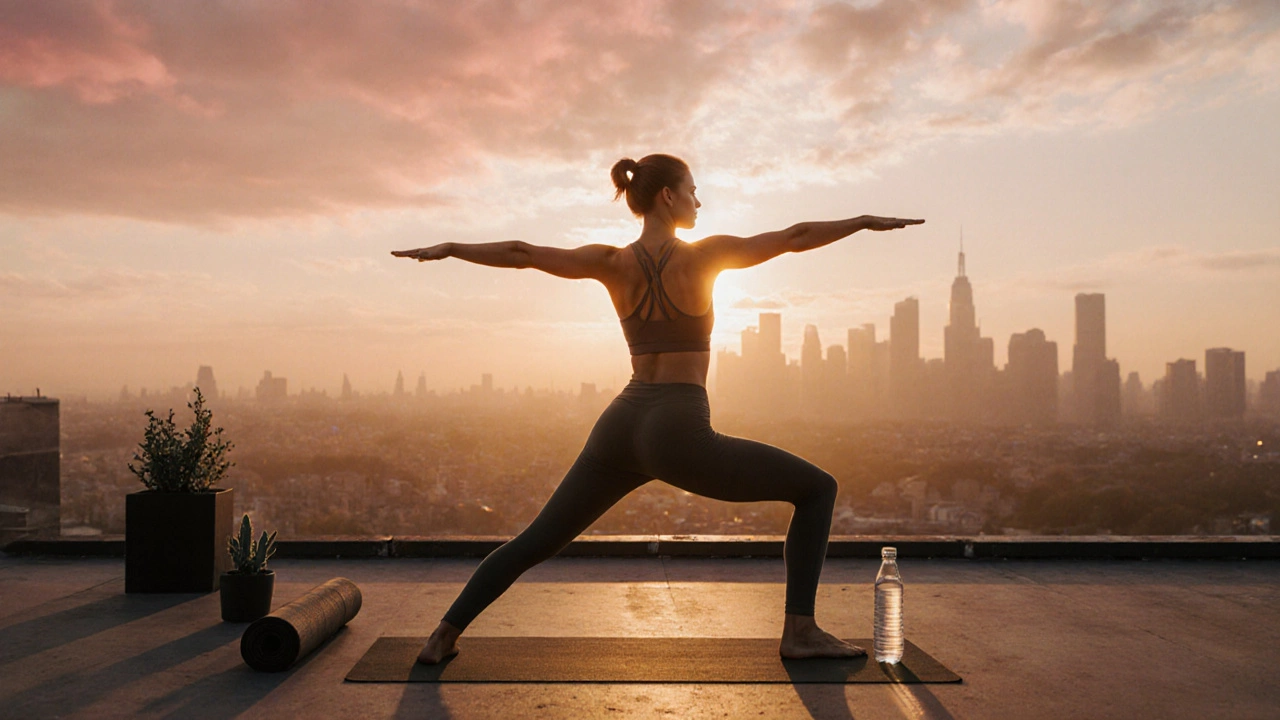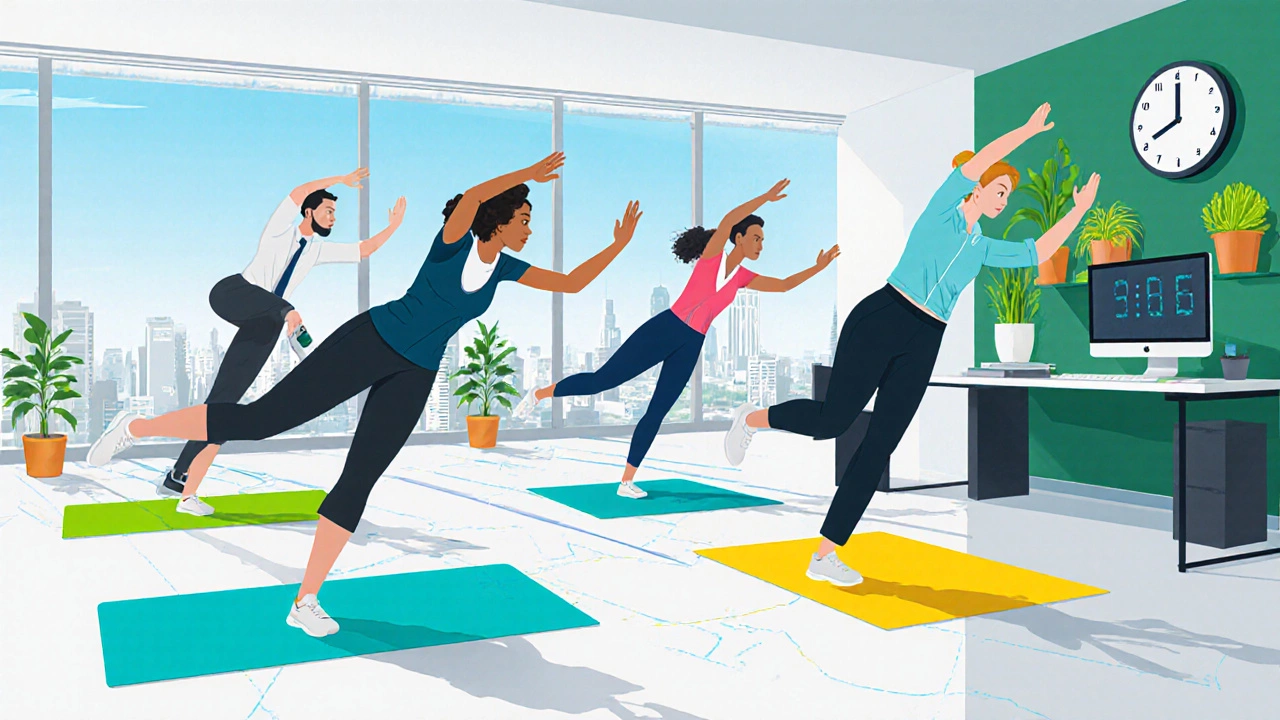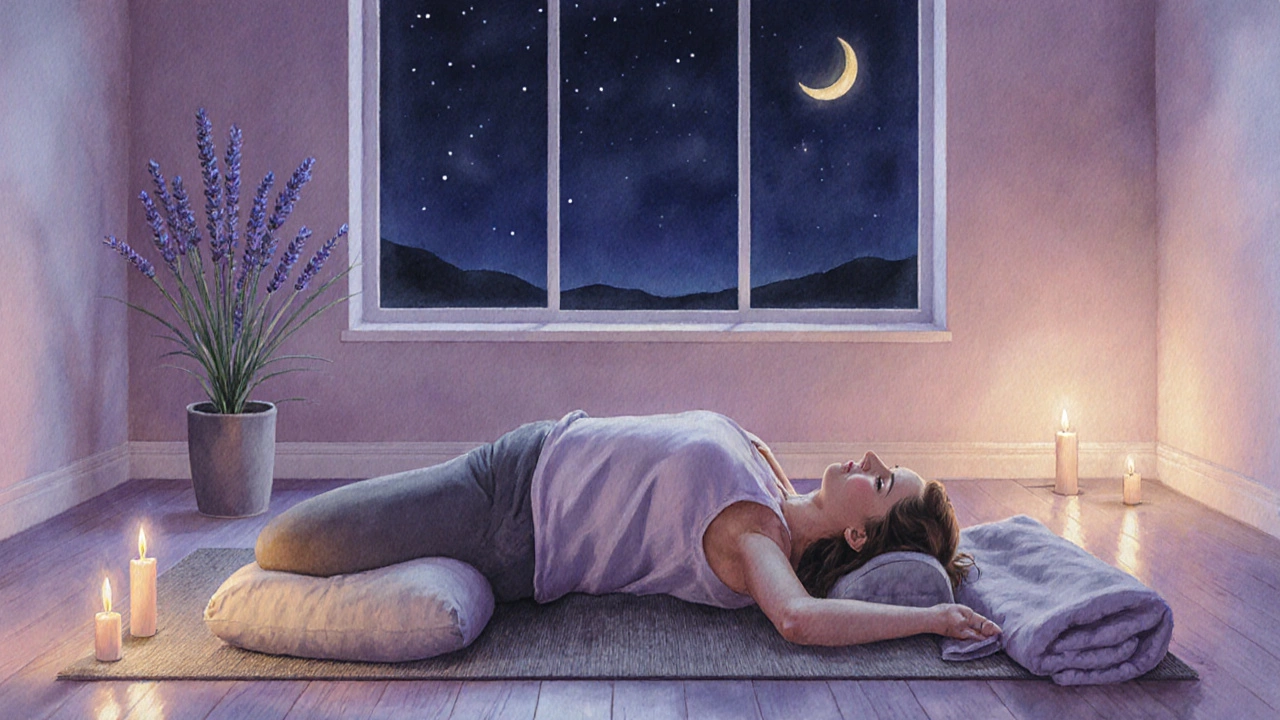
Ever wonder why some days you feel totally in the zone for a yoga flow while other times you’re just dragging your mat around? The answer isn’t magic - it’s all about when you practice. Your body runs on a 24‑hour clock, hormones spike and dip, and even the temperature outside can change how flexible or focused you feel. Below we break down the science, the pros and cons of each window, and give you a simple way to pick the slot that works best for you.
At the core of the timing debate is the Circadian Rhythm the internal 24‑hour cycle that regulates sleep, hormone release, body temperature, and metabolism. When this rhythm is in sync, you’ll notice increased energy in the morning, peak alertness mid‑day, and a natural wind‑down in the evening. Yoga interacts directly with these fluctuations.
First thing after you roll out of bed, cortisol levels are at their highest. Cortisol a hormone that helps wake you up and mobilizes energy stores spikes around 30‑45 minutes after waking, making muscles more pliable and the mind sharper. A gentle vinyasa or sun‑salutation series can harness that surge, giving you:
Research from the University of Queensland (2024) showed a 12‑percent increase in focus scores after a 20‑minute sunrise yoga session compared to a no‑exercise control.
By lunch, your body temperature peaks, and reaction time is at its fastest. This is an ideal window for more dynamic flows that challenge balance and strength. Benefits include:
A 2023 study from the Australian Institute of Sport found that a 30‑minute power yoga session at 1 pm reduced perceived fatigue by 18 % in office workers.

As the sun sets, melatonin production ramps up, signalling your body it’s time to wind down. Melatonin the hormone that regulates sleep‑wake cycles makes muscles more relaxed, which is perfect for restorative poses.
According to a 2025 meta‑analysis of 22 studies, participants who did a 20‑minute gentle yoga routine at night reported a 23‑percent increase in total sleep time.
There isn’t a one‑size‑fits‑all answer. Instead, match your personal rhythm, daily schedule, and goals to the window that offers the most relevant benefits. Use the quick decision tree below:
Experiment for two weeks with each slot and track three simple metrics: perceived energy, sleep quality, and mood. The slot that consistently scores highest becomes your go‑to.

| Time of Day | Main Hormone | Key Benefits | Best Style |
|---|---|---|---|
| Morning (6‑9 am) | Cortisol | Increased energy, improved flexibility, higher metabolism | Sun‑salutation, Vinyasa |
| Midday (12‑2 pm) | Core body temperature peak | Peak strength, blood‑pressure regulation, mental clarity | Power yoga, Ashtanga |
| Evening (7‑9 pm) | Melatonin | Better sleep, stress relief, joint recovery | Restorative, Yin |
Feel free to mix and match. For instance, a short sunrise flow on weekdays and a deeper restorative session on weekends can give you a balanced routine.
Remember, yoga is a practice, not a performance. Small, consistent efforts beat occasional marathon sessions.
Absolutely. Beginners benefit most from a consistent schedule, even if it’s just 10 minutes. Choose a time when you feel naturally awake and stick with it for at least a month.
Usually not. Intense flows raise adrenaline and heart rate, which can keep you alert. Opt for gentle restorative poses instead if you’re within two hours of sleep.
Morning: 20‑30 minutes to wake the body. Midday: 30‑45 minutes for strength. Evening: 15‑25 minutes of slow, breathing‑focused poses.
Yes. Hormonal shifts, sleep patterns, and recovery needs evolve. Older adults often find evening sessions best for joint relief, while younger people may favor morning energy boosts.
A light snack (like a banana) 30‑45 minutes before a morning flow is fine. Avoid heavy meals within two hours of any session to prevent cramps.